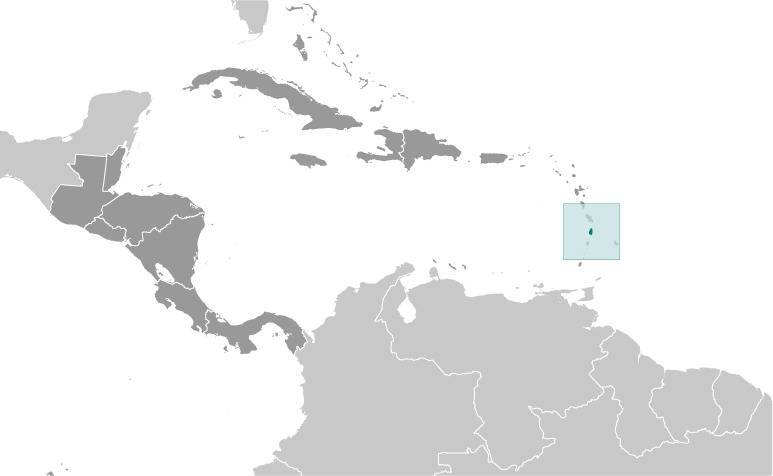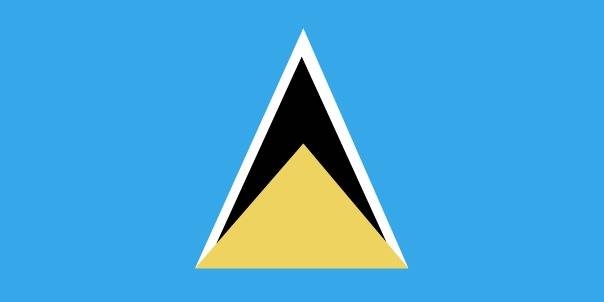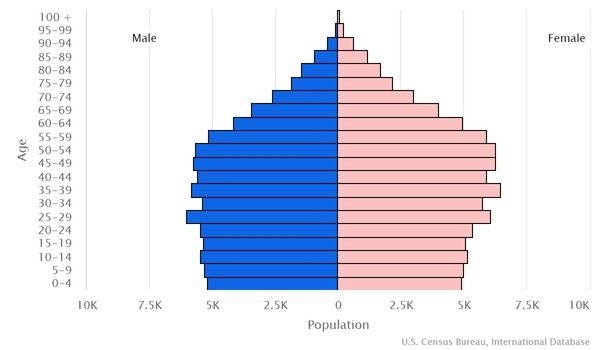Country Summary




Introduction
Background
The island, with its fine natural harbor at Castries and burgeoning sugar industry, was contested by England and France throughout the 17th and early 18th centuries (changing possession 14 times). It was finally ceded to the UK in 1814. Saint Lucia joined the West Indies Federation (1958-1962) and in 1967 became one of the six members of the West Indies Associated States. In 1979, Saint Lucia gained full independence.
Geography
Area
total: 616 sq km
land: 606 sq km
water: 10 sq km
Climate
tropical, moderated by northeast trade winds; dry season January to April, rainy season May to August
Natural resources
forests, sandy beaches, minerals (pumice), mineral springs, geothermal potential
People and Society
Population
167,122 (2022 est.)
Ethnic groups
Black/African descent 85.3%, mixed 10.9%, East Indian 2.2%, other 1.6%, unspecified 0.1% (2010 est.)
Languages
English (official), Saint Lucian Creole
Religions
Roman Catholic 61.5%, Protestant 25.5% (includes Seventh Day Adventist 10.4%, Pentecostal 8.9%, Baptist 2.2%, Anglican 1.6%, Church of God 1.5%, other Protestant 0.9%), other Christian 3.4% (includes Evangelical 2.3% and Jehovah's Witness 1.1%), Rastafarian 1.9%, other 0.4%, none 5.9%, unspecified 1.4% (2010 est.)
Population growth rate
0.29% (2022 est.)
Government
Government type
parliamentary democracy under a constitutional monarchy; a Commonwealth realm
Capital
name: Castries
Executive branch
chief of state: King CHARLES III (since 8 September 2022); represented by Acting Governor General Errol CHARLES (since 11 November 2021)
head of government: Prime Minister Philip J. PIERRE (since 28 July 2021)
Legislative branch
description: bicameral Houses of Parliament consists of:
Senate (11 seats; all members appointed by the governor general; 6 on the advice of the prime minister, 3 on the advice of the leader of the opposition, and 2 upon consultation with religious, economic, and social groups; members serve 5-year terms)
House of Assembly (18 seats; 17 members directly elected in single-seat constituencies by simple majority vote and the speaker, designated from outside the Parliament; members serve 5-year terms)
Economy
Economic overview
upper middle-income, tourism-based Caribbean island economy; environmentally fragile; energy import-dependent; OECS host; major banana producer; well-educated labor force; key infrastructure improvements; investing in communications and IT
Real GDP (purchasing power parity)
$2.25 billion (2020 est.)
Real GDP per capita
$12,300 (2020 est.)
Agricultural products
bananas, coconuts, fruit, tropical fruit, plantains, roots/tubers, cassava, poultry, vegetables, mangoes/guavas
Industries
tourism; clothing, assembly of electronic components, beverages, corrugated cardboard boxes, lime processing, coconut processing
Exports
$1.22 billion (2018 est.)
Exports - partners
United States 29%, Uruguay 16%, Barbados 8%, Trinidad and Tobago 5.5%, United Kingdom 6%, Dominica 6%, Guyana 5%, France 5% (2019)
Exports - commodities
crude petroleum, beer, jewelry, bananas, refined petroleum, rum (2019)
Imports
$1 billion (2018 est.)
Imports - partners
Colombia 46%, United States 30%, Trinidad and Tobago 5% (2019)
Imports - commodities
crude petroleum, refined petroleum, cars, poultry meats, natural gas (2019)
Exchange rates
East Caribbean dollars (XCD) per US dollar -
Page last updated: Monday, September 12, 2022
